File Info
| Exam | Certified Threat Intelligence Analyst |
| Number | 312-85 |
| File Name | ECCouncil.312-85.VCEplus.2025-01-27.22q.tqb |
| Size | 119 KB |
| Posted | Jan 27, 2025 |
| Download | ECCouncil.312-85.VCEplus.2025-01-27.22q.tqb |
How to open VCEX & EXAM Files?
Files with VCEX & EXAM extensions can be opened by ProfExam Simulator.
Coupon: MASTEREXAM
With discount: 20%
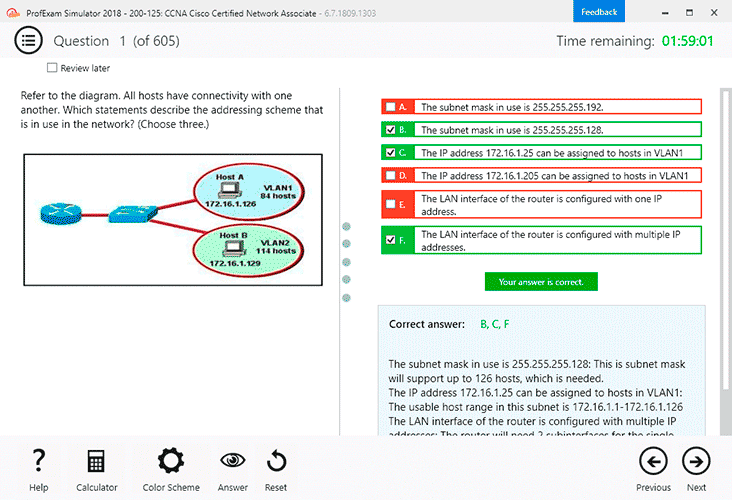
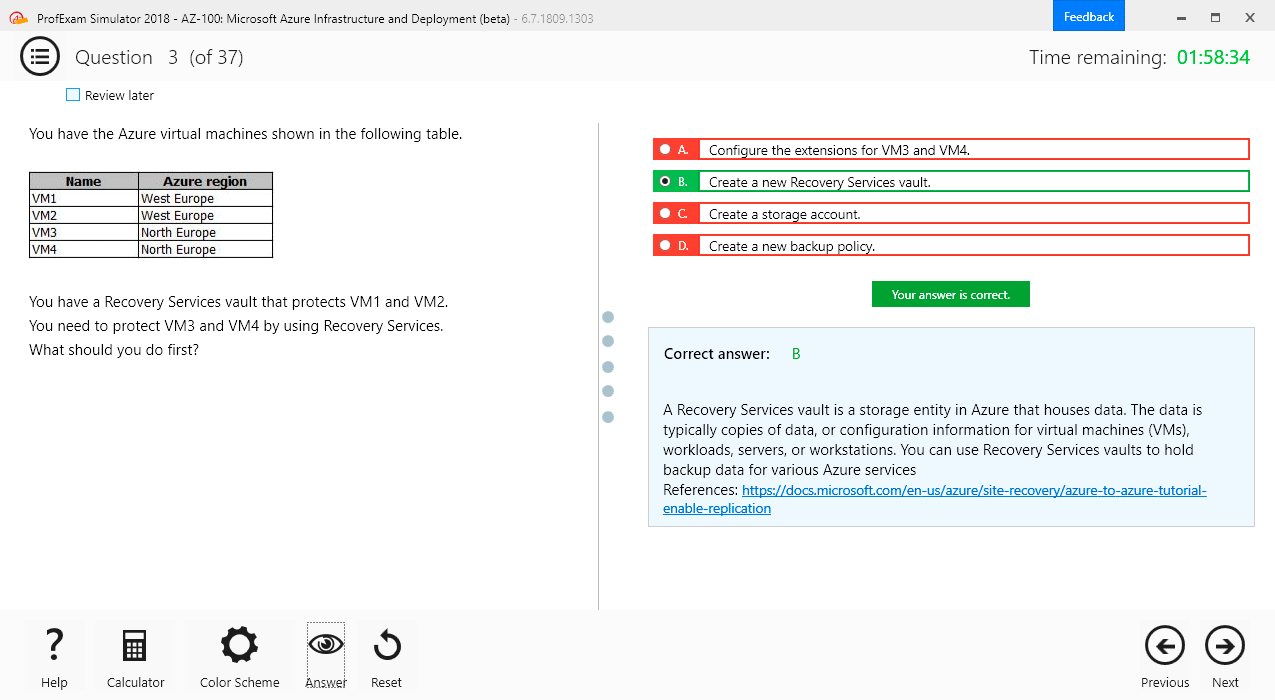
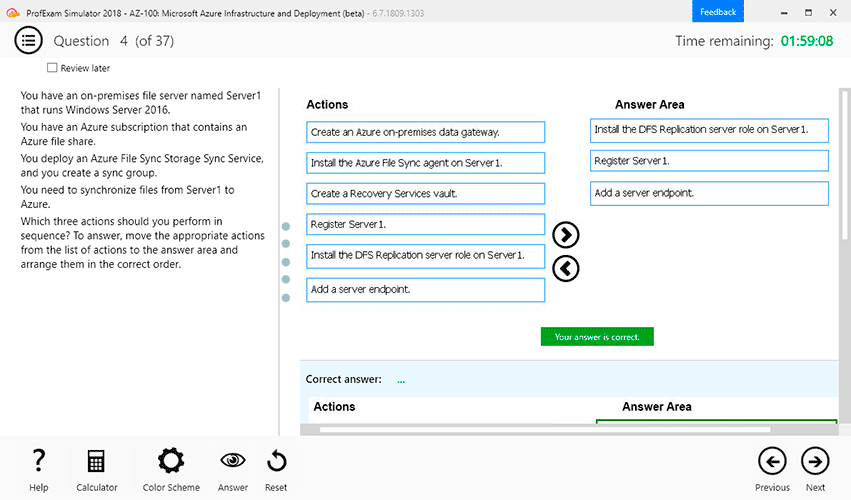
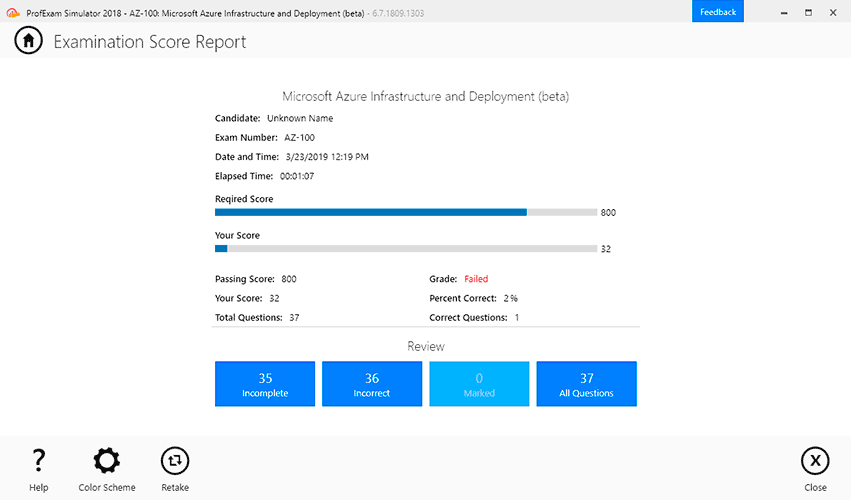
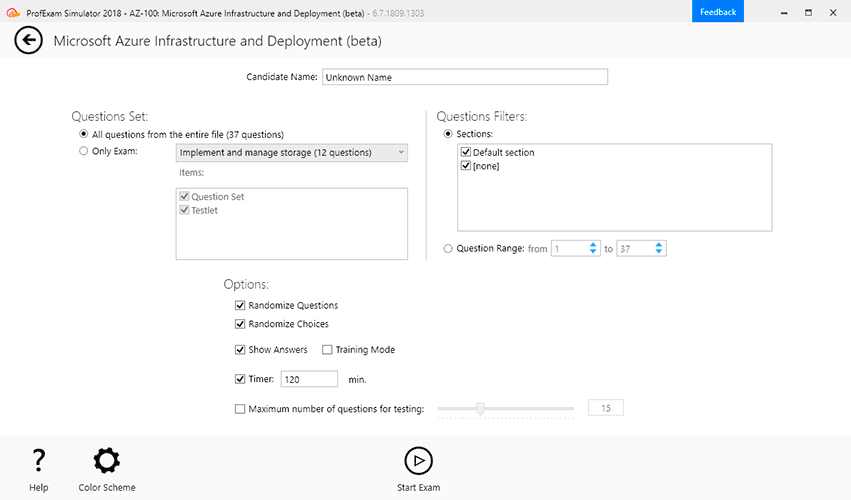

Demo Questions
Question 1
Which of the following characteristics of APT refers to numerous attempts done by the attacker to gain entry to the target's network?
- Risk tolerance
- Timeliness
- Attack origination points
- Multiphased
Correct answer: D
Explanation:
Advanced Persistent Threats (APTs) are characterized by their 'Multiphased' nature, referring to the various stages or phases the attacker undertakes to breach a network, remain undetected, and achieve their objectives. This characteristic includes numerous attempts to gain entry to the target's network, often starting with reconnaissance, followed by initial compromise, and progressing through stages such as establishment of a backdoor, expansion, data exfiltration, and maintaining persistence. This multiphased approach allows attackers to adapt and pursue their objectives despite potential disruptions or initial failures in their campaign.Reference:'Understanding Advanced Persistent Threats and Complex Malware,' by FireEye MITRE ATT&CK Framework, detailing the multiphased nature of adversary tactics and techniques Advanced Persistent Threats (APTs) are characterized by their 'Multiphased' nature, referring to the various stages or phases the attacker undertakes to breach a network, remain undetected, and achieve their objectives. This characteristic includes numerous attempts to gain entry to the target's network, often starting with reconnaissance, followed by initial compromise, and progressing through stages such as establishment of a backdoor, expansion, data exfiltration, and maintaining persistence. This multiphased approach allows attackers to adapt and pursue their objectives despite potential disruptions or initial failures in their campaign.
Reference:
'Understanding Advanced Persistent Threats and Complex Malware,' by FireEye MITRE ATT&CK Framework, detailing the multiphased nature of adversary tactics and techniques
Question 2
Lizzy, an analyst, wants to recognize the level of risks to the organization so as to plan countermeasures against cyber attacks. She used a threat modelling methodology where she performed the following stages:
- Stage 1: Build asset-based threat profiles
- Stage 2: Identify infrastructure vulnerabilities
- Stage 3: Develop security strategy and plans
Which of the following threat modelling methodologies was used by Lizzy in the aforementioned scenario?
- TRIKE
- VAST
- OCTAVE
- DREAD
Correct answer: C
Explanation:
The threat modeling methodology employed by Lizzy, which involves building asset-based threat profiles, identifying infrastructure vulnerabilities, and developing security strategies and plans, aligns with the OCTAVE (Operationally Critical Threat, Asset, and Vulnerability Evaluation) methodology. OCTAVE focuses on organizational risk and security practices, emphasizing self-directed risk assessments to identify and prioritize threats to organizational assets and develop appropriate security strategies and plans. This methodology is asset-driven and revolves around understanding critical assets, identifying threats to those assets, and assessing vulnerabilities, leading to the development of a comprehensive security strategy.Reference:The CERT Guide to System and Network Security Practices by Julia H. Allen 'OCTAVE Method Implementation Guide Version 2.0,' Carnegie Mellon University, Software Engineering Institute The threat modeling methodology employed by Lizzy, which involves building asset-based threat profiles, identifying infrastructure vulnerabilities, and developing security strategies and plans, aligns with the OCTAVE (Operationally Critical Threat, Asset, and Vulnerability Evaluation) methodology. OCTAVE focuses on organizational risk and security practices, emphasizing self-directed risk assessments to identify and prioritize threats to organizational assets and develop appropriate security strategies and plans. This methodology is asset-driven and revolves around understanding critical assets, identifying threats to those assets, and assessing vulnerabilities, leading to the development of a comprehensive security strategy.
Reference:
The CERT Guide to System and Network Security Practices by Julia H. Allen 'OCTAVE Method Implementation Guide Version 2.0,' Carnegie Mellon University, Software Engineering Institute
Question 3
Michael, a threat analyst, works in an organization named TechTop, was asked to conduct a cyber-threat intelligence analysis. After obtaining information regarding threats, he has started analyzing the information and understanding the nature of the threats.
What stage of the cyber-threat intelligence is Michael currently in?
- Unknown unknowns
- Unknowns unknown
- Known unknowns
- Known knowns
Correct answer: C
Explanation:
The 'known unknowns' stage in cyber-threat intelligence refers to the phase where an analyst has identified threats but the specific details, implications, or full nature of these threats are not yet fully understood. Michael, in this scenario, has obtained information on threats and is in the process of analyzing this information to understand the nature of the threats better. This stage involves analyzing the known data to uncover additional insights and fill in the gaps in understanding, thereby transitioning the 'unknowns' into 'knowns.' This phase is critical in threat intelligence as it helps in developing actionable intelligence by deepening the understanding of the threats faced.Reference:'Intelligence Analysis: A Target-Centric Approach,' by Robert M. Clark'Structured Analytic Techniques for Intelligence Analysis,' by Richards J. Heuer Jr. and Randolph H. Pherson The 'known unknowns' stage in cyber-threat intelligence refers to the phase where an analyst has identified threats but the specific details, implications, or full nature of these threats are not yet fully understood. Michael, in this scenario, has obtained information on threats and is in the process of analyzing this information to understand the nature of the threats better. This stage involves analyzing the known data to uncover additional insights and fill in the gaps in understanding, thereby transitioning the 'unknowns' into 'knowns.' This phase is critical in threat intelligence as it helps in developing actionable intelligence by deepening the understanding of the threats faced.
Reference:
'Intelligence Analysis: A Target-Centric Approach,' by Robert M. Clark
'Structured Analytic Techniques for Intelligence Analysis,' by Richards J. Heuer Jr. and Randolph H. Pherson
Question 4
Enrage Tech Company hired Enrique, a security analyst, for performing threat intelligence analysis. While performing data collection process, he used a counterintelligence mechanism where a recursive DNS server is employed to perform interserver DNS communication and when a request is generated from any name server to the recursive DNS server, the recursive DNS servers log the responses that are received. Then it replicates the logged data and stores the data in the central database. Using these logs, he analyzed the malicious attempts that took place over DNS infrastructure.
Which of the following cyber counterintelligence (CCI) gathering technique has Enrique used for data collection?
- Data collection through passive DNS monitoring
- Data collection through DNS interrogation
- Data collection through DNS zone transfer
- Data collection through dynamic DNS (DDNS)
Correct answer: A
Explanation:
Passive DNS monitoring involves collecting data about DNS queries and responses without actively querying DNS servers, thereby not altering or interfering with DNS traffic. This technique allows analysts to track changes in DNS records and observe patterns that may indicate malicious activity. In the scenario described, Enrique is employing passive DNS monitoring by using a recursive DNS server to log the responses received from name servers, storing these logs in a central database for analysis. This approach is effective for identifying malicious domains, mapping malware campaigns, and understanding threat actors' infrastructure without alerting them to the fact that they are being monitored. This method is distinct from active techniques such as DNS interrogation or zone transfers, which involve sending queries to DNS servers, and dynamic DNS, which refers to the automatic updating of DNS records.Reference:SANS Institute InfoSec Reading Room, 'Using Passive DNS to Enhance Cyber Threat Intelligence''Passive DNS Replication,' by Florian Weimer, FIRST Conference Presentation Passive DNS monitoring involves collecting data about DNS queries and responses without actively querying DNS servers, thereby not altering or interfering with DNS traffic. This technique allows analysts to track changes in DNS records and observe patterns that may indicate malicious activity. In the scenario described, Enrique is employing passive DNS monitoring by using a recursive DNS server to log the responses received from name servers, storing these logs in a central database for analysis. This approach is effective for identifying malicious domains, mapping malware campaigns, and understanding threat actors' infrastructure without alerting them to the fact that they are being monitored. This method is distinct from active techniques such as DNS interrogation or zone transfers, which involve sending queries to DNS servers, and dynamic DNS, which refers to the automatic updating of DNS records.
Reference:
SANS Institute InfoSec Reading Room, 'Using Passive DNS to Enhance Cyber Threat Intelligence'
'Passive DNS Replication,' by Florian Weimer, FIRST Conference Presentation
Question 5
John, a professional hacker, is trying to perform APT attack on the target organization network. He gains access to a single system of a target organization and tries to obtain administrative login credentials to gain further access to the systems in the network using various techniques.
What phase of the advanced persistent threat lifecycle is John currently in?
- Initial intrusion
- Search and exfiltration
- Expansion
- Persistence
Correct answer: C
Explanation:
The phase described where John, after gaining initial access, is attempting to obtain administrative credentials to further access systems within the network, is known as the 'Expansion' phase of an Advanced Persistent Threat (APT) lifecycle. This phase involves the attacker expanding their foothold within the target's environment, often by escalating privileges, compromising additional systems, and moving laterally through the network. The goal is to increase control over the network and maintain persistence for ongoing access. This phase follows the initial intrusion and sets the stage for establishing long-term presence and eventual data exfiltration or other malicious objectives.Reference:MITRE ATT&CK Framework, specifically the tactics related to Credential Access and Lateral Movement 'APT Lifecycle: Detecting the Undetected,' a whitepaper by CyberArk The phase described where John, after gaining initial access, is attempting to obtain administrative credentials to further access systems within the network, is known as the 'Expansion' phase of an Advanced Persistent Threat (APT) lifecycle. This phase involves the attacker expanding their foothold within the target's environment, often by escalating privileges, compromising additional systems, and moving laterally through the network. The goal is to increase control over the network and maintain persistence for ongoing access. This phase follows the initial intrusion and sets the stage for establishing long-term presence and eventual data exfiltration or other malicious objectives.
Reference:
MITRE ATT&CK Framework, specifically the tactics related to Credential Access and Lateral Movement 'APT Lifecycle: Detecting the Undetected,' a whitepaper by CyberArk
Question 6
Jim works as a security analyst in a large multinational company. Recently, a group of hackers penetrated into their organizational network and used a data staging technique to collect sensitive data. They collected all sorts of sensitive data about the employees and customers, business tactics of the organization, financial information, network infrastructure information and so on.
What should Jim do to detect the data staging before the hackers exfiltrate from the network?
- Jim should identify the attack at an initial stage by checking the content of the user agent field.
- Jim should analyze malicious DNS requests, DNS payload, unspecified domains, and destination of DNS requests.
- Jim should monitor network traffic for malicious file transfers, file integrity monitoring, and event logs.
- Jim should identify the web shell running in the network by analyzing server access, error logs, suspicious strings indicating encoding, user agent strings, and so on.
Correct answer: C
Explanation:
In the scenario described, where attackers have penetrated the network and are staging data for exfiltration, Jim should focus on monitoring network traffic for signs of malicious file transfers, implement file integrity monitoring, and scrutinize event logs. This approach is crucial for detecting unusual activity that could indicate data staging, such as large volumes of data being moved to uncommon locations, sudden changes in file integrity, or suspicious entries in event logs. Early detection of these indicators can help in identifying the staging activity before the data is exfiltrated from the network.Reference:NIST Special Publication 800-61 Rev. 2, 'Computer Security Incident Handling Guide'SANS Institute Reading Room, 'Detecting Malicious Activity with DNS and NetFlow' In the scenario described, where attackers have penetrated the network and are staging data for exfiltration, Jim should focus on monitoring network traffic for signs of malicious file transfers, implement file integrity monitoring, and scrutinize event logs. This approach is crucial for detecting unusual activity that could indicate data staging, such as large volumes of data being moved to uncommon locations, sudden changes in file integrity, or suspicious entries in event logs. Early detection of these indicators can help in identifying the staging activity before the data is exfiltrated from the network.
Reference:
NIST Special Publication 800-61 Rev. 2, 'Computer Security Incident Handling Guide'
SANS Institute Reading Room, 'Detecting Malicious Activity with DNS and NetFlow'
Question 7
Andrews and Sons Corp. has decided to share threat information among sharing partners. Garry, a threat analyst, working in Andrews and Sons Corp., has asked to follow a trust model necessary to establish trust between sharing partners. In the trust model used by him, the first organization makes use of a body of evidence in a second organization, and the level of trust between two organizations depends on the degree and quality of evidence provided by the first organization.
Which of the following types of trust model is used by Garry to establish the trust?
- Mediated trust
- Mandated trust
- Direct historical trust
- Validated trust
Correct answer: D
Explanation:
In the trust model described, where trust between two organizations depends on the degree and quality of evidence provided by the first organization, the model in use is 'Validated Trust.' This model relies on the validation of evidence or credentials presented by one party to another to establish trust. The validation process assesses the credibility, reliability, and relevance of the information shared, forming the basis of the trust relationship between the sharing partners. This approach is common in threat intelligence sharing where the accuracy and reliability of shared information are critical.Reference:'Building a Cybersecurity Culture,' ISACA'Trust Models in Information Security,' Journal of Internet Services and Applications In the trust model described, where trust between two organizations depends on the degree and quality of evidence provided by the first organization, the model in use is 'Validated Trust.' This model relies on the validation of evidence or credentials presented by one party to another to establish trust. The validation process assesses the credibility, reliability, and relevance of the information shared, forming the basis of the trust relationship between the sharing partners. This approach is common in threat intelligence sharing where the accuracy and reliability of shared information are critical.
Reference:
'Building a Cybersecurity Culture,' ISACA
'Trust Models in Information Security,' Journal of Internet Services and Applications
Question 8
A threat analyst obtains an intelligence related to a threat, where the data is sent in the form of a connection request from a remote host to the server. From this data, he obtains only the IP address of the source and destination but no contextual information. While processing this data, he obtains contextual information stating that multiple connection requests from different geo-locations are received by the server within a short time span, and as a result, the server is stressed and gradually its performance has reduced. He further performed analysis on the information based on the past and present experience and concludes the attack experienced by the client organization.
Which of the following attacks is performed on the client organization?
- DHCP attacks
- MAC spoofing attack
- Distributed Denial-of-Service (DDoS) attack
- Bandwidth attack
Correct answer: C
Explanation:
The attack described, where multiple connection requests from different geo-locations are received by a server within a short time span leading to stress and reduced performance, is indicative of a Distributed Denial-of-Service (DDoS) attack. In a DDoS attack, the attacker floods the target's resources (such as a server) with excessive requests from multiple sources, making it difficult for the server to handle legitimate traffic, leading to degradation or outright unavailability of service. The use of multiple geo-locations for the attack sources is a common characteristic of DDoS attacks, making them harder to mitigate.Reference:'Understanding Denial-of-Service Attacks,' US-CERT'DDoS Quick Guide,' DHS/NCCIC The attack described, where multiple connection requests from different geo-locations are received by a server within a short time span leading to stress and reduced performance, is indicative of a Distributed Denial-of-Service (DDoS) attack. In a DDoS attack, the attacker floods the target's resources (such as a server) with excessive requests from multiple sources, making it difficult for the server to handle legitimate traffic, leading to degradation or outright unavailability of service. The use of multiple geo-locations for the attack sources is a common characteristic of DDoS attacks, making them harder to mitigate.
Reference:
'Understanding Denial-of-Service Attacks,' US-CERT
'DDoS Quick Guide,' DHS/NCCIC
Question 9
Jame, a professional hacker, is trying to hack the confidential information of a target organization. He identified the vulnerabilities in the target system and created a tailored deliverable malicious payload using an exploit and a backdoor to send it to the victim.
Which of the following phases of cyber kill chain methodology is Jame executing?
- Reconnaissance
- Installation
- Weaponization
- Exploitation
Correct answer: C
Explanation:
In the cyber kill chain methodology, the phase where Jame is creating a tailored malicious deliverable that includes an exploit and a backdoor is known as 'Weaponization'. During this phase, the attacker prepares by coupling a payload, such as a virus or worm, with an exploit into a deliverable format, intending to compromise the target's system. This step follows the initial 'Reconnaissance' phase, where the attacker gathers information on the target, and precedes the 'Delivery' phase, where the weaponized bundle is transmitted to the target. Weaponization involves the preparation of the malware to exploit the identified vulnerabilities in the target system.Reference:Lockheed Martin's Cyber Kill Chain framework 'Intelligence-Driven Computer Network Defense Informed by Analysis of Adversary Campaigns and Intrusion Kill Chains,' leading to the development of the Cyber Kill Chain framework In the cyber kill chain methodology, the phase where Jame is creating a tailored malicious deliverable that includes an exploit and a backdoor is known as 'Weaponization'. During this phase, the attacker prepares by coupling a payload, such as a virus or worm, with an exploit into a deliverable format, intending to compromise the target's system. This step follows the initial 'Reconnaissance' phase, where the attacker gathers information on the target, and precedes the 'Delivery' phase, where the weaponized bundle is transmitted to the target. Weaponization involves the preparation of the malware to exploit the identified vulnerabilities in the target system.
Reference:
Lockheed Martin's Cyber Kill Chain framework 'Intelligence-Driven Computer Network Defense Informed by Analysis of Adversary Campaigns and Intrusion Kill Chains,' leading to the development of the Cyber Kill Chain framework
Question 10
Steve works as an analyst in a UK-based firm. He was asked to perform network monitoring to find any evidence of compromise. During the network monitoring, he came to know that there are multiple logins from different locations in a short time span. Moreover, he also observed certain irregular log in patterns from locations where the organization does not have business relations. This resembles that somebody is trying to steal confidential information.
Which of the following key indicators of compromise does this scenario present?
- Unusual outbound network traffic
- Unexpected patching of systems
- Unusual activity through privileged user account
- Geographical anomalies
Correct answer: D
Explanation:
The scenario described by Steve's observations, where multiple logins are occurring from different locations in a short time span, especially from locations where the organization has no business relations, points to 'Geographical anomalies' as a key indicator of compromise (IoC). Geographical anomalies in logins suggest unauthorized access attempts potentially made by attackers using compromised credentials. This is particularly suspicious when the locations of these logins do not align with the normal geographical footprint of the organization's operations or employee locations. Monitoring for such anomalies can help in the early detection ofunauthorized access and potential data breaches.Reference:SANS Institute Reading Room, 'Indicators of Compromise: Reality's Version of the Minority Report' 'Identifying Indicators of Compromise' by CERT-UK The scenario described by Steve's observations, where multiple logins are occurring from different locations in a short time span, especially from locations where the organization has no business relations, points to 'Geographical anomalies' as a key indicator of compromise (IoC). Geographical anomalies in logins suggest unauthorized access attempts potentially made by attackers using compromised credentials. This is particularly suspicious when the locations of these logins do not align with the normal geographical footprint of the organization's operations or employee locations. Monitoring for such anomalies can help in the early detection of
unauthorized access and potential data breaches.
Reference:
SANS Institute Reading Room, 'Indicators of Compromise: Reality's Version of the Minority Report'
'Identifying Indicators of Compromise' by CERT-UK

